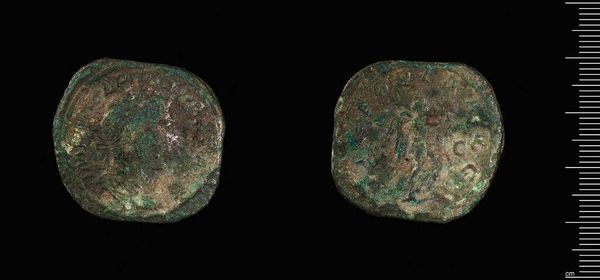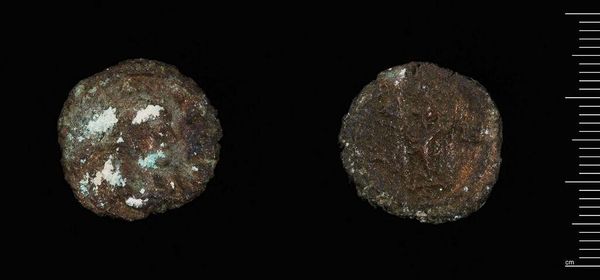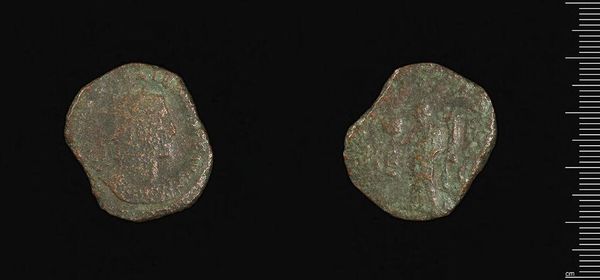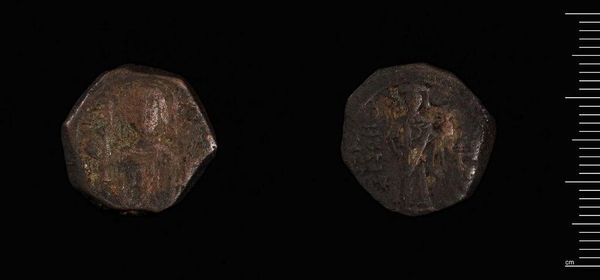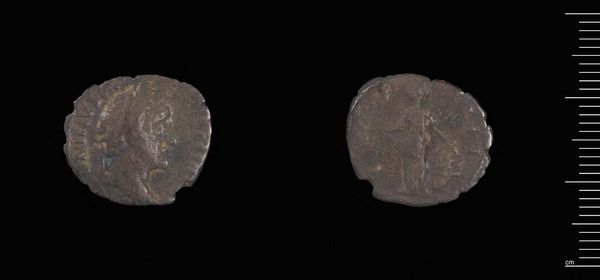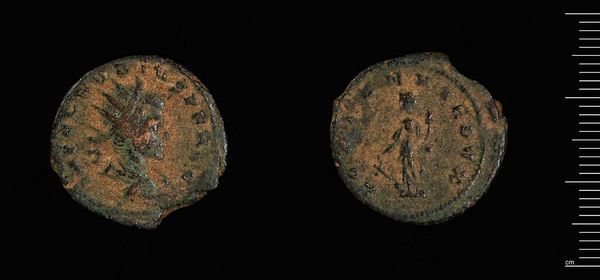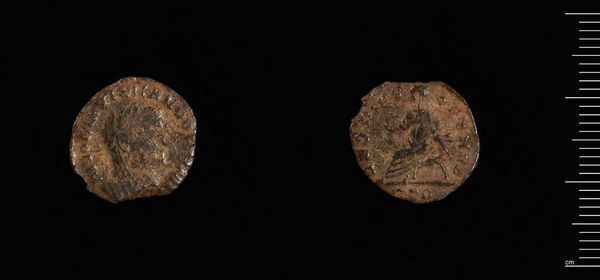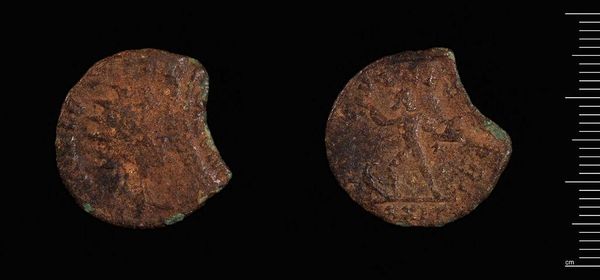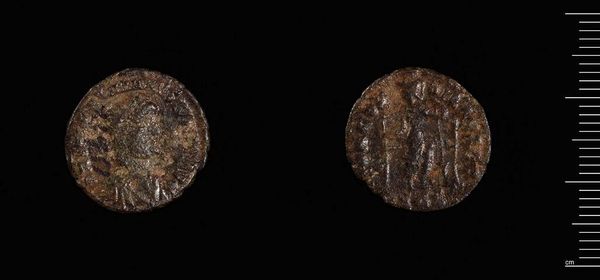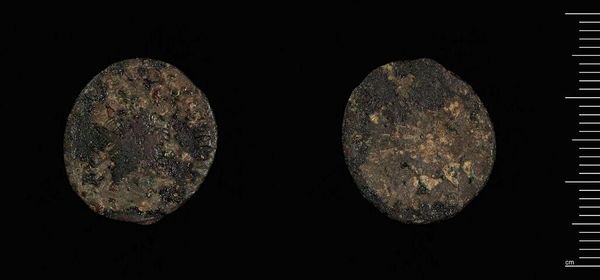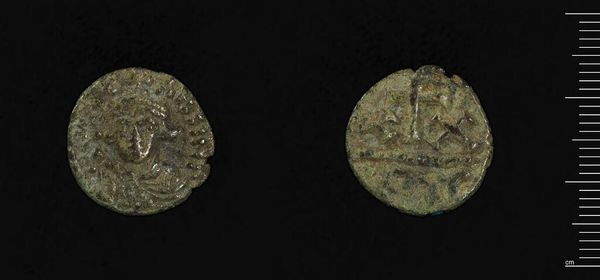
Dimensions: 2.34 g
Copyright: CC0 1.0
Curator: This is an Antoninianus of Gallienus, a coin likely dating from the mid-3rd century AD, currently held in the Harvard Art Museums. Editor: It feels incredibly weighty for its size. The worn texture speaks of countless hands, its details blurred by time and trade. Curator: As currency, it reflects the economic and social realities of the Roman Empire, bearing witness to both imperial ambition and the everyday transactions of its citizens. The physical degradation, the missing segments, tell a story of use and eventual discard. Editor: The depiction of Gallienus, though faded, still projects power. The laurel wreath, a symbol of victory and authority, is almost iconic in its familiarity across Roman coinage. It’s a potent image, even in this diminished state. Curator: Absolutely. And consider the means of production. Striking these coins involved skilled labor and access to valuable resources, which underpinned the emperor’s authority. It's fascinating how this small object represents a whole system. Editor: It really is a powerful encapsulation of history, even just in its imagery and the symbolism it carries. Curator: Indeed. Analyzing this coin really offers a window into the economics and the imperial ideology that shaped the ancient world. Editor: I agree. There is more than meets the eye.
Comments
No comments
Be the first to comment and join the conversation on the ultimate creative platform.
